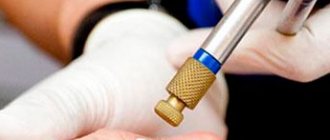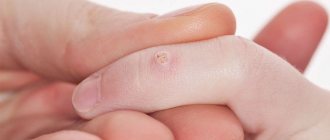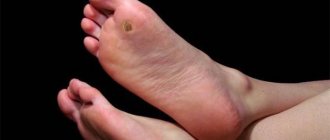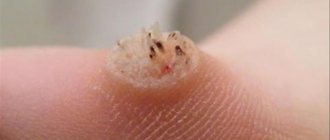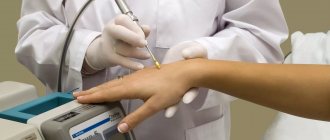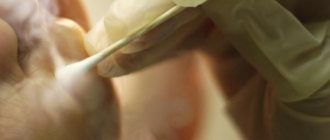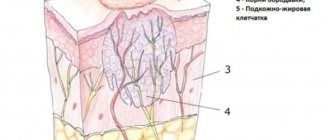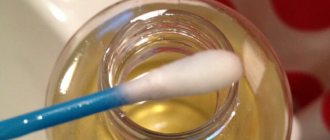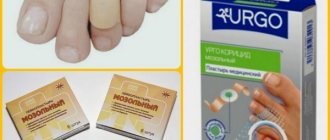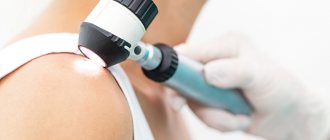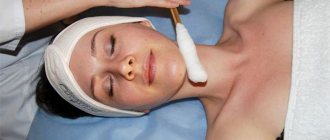Spine removal with liquid nitrogen is the destruction of a wart by quickly freezing the affected tissue. The painful formation occurs as a result of infection with certain strains of HPV and causes discomfort and pain. It is better to get rid of this unpleasant phenomenon in the early stages, to prevent the growth of pathological cells.
Nitrogen removal efficiency
Spica is a viral papilloma that occurs against the background of decreased human immunity due to the presence of HPV in the body. It looks like a flat growth, mainly on the legs or arms with black spots all over the surface. After infection, the virus, being in a suppressed immune state, does not make itself known. When the body’s defenses are weakened, it begins to multiply in cells, mutate, and increase blood flow to the site of localization. Excessive growth of infected mutated cells puts pressure on surrounding tissues, as a result of which a person experiences pain when pressing on the papilloma.
Cryodestruction allows you to remove viral defects on the skin of the palms, soles, and fingers the first time, if they have recently appeared and do not have a large area of distribution. If the roots of the wart have penetrated deep into the dermis, several procedures will be required to burn them out.
Getting rid of spines involves destroying the top layer of the growth, the root that penetrates the skin, and the vessels that feed the formation. If the impact on the neoplasm is insufficient, if part of it remains intact, the pathology will intensify and spread over a larger area.
Why do spines form?
The human body is home to a huge number of bacteria and viruses.
Many of them are potentially dangerous and can cause serious illness. The papilloma virus is no exception. Despite this, most people feel great, lead a normal life and are not even aware of the pathogenic microflora that lives inside the body. This is because the immune system does its job well. The appearance of a spine on the sole or palm is the result of a decrease in the body's defenses. The psychological state of a person is also of great importance. Patients often complain that spines appear on the body after a stressful situation. Neglect of quality rest, excessive mental and physical stress, and lack of proper sleep will also contribute to the appearance of formations.
Nitrogen burning technology
The liquid nitrogen treatment method does not require special preparation from the patient for the procedure. After examining the neoplasm, the doctor will numb the affected area for extensive lesions of the skin; for isolated rashes, the procedure can be performed without analgesics. With the help of cryotherapy, viral skin formations, other skin defects, and core calluses are successfully removed. Nitrogen acts instantly. Local or injectable medications are used as painkillers.
The technology for performing cryodestruction allows the use of a special directed nitrogen-spraying device, medical forceps or scissors, and a cotton swab with a long stem.
A special installation for spraying the drug is used in modern private clinics, and a cotton swab is used in government institutions. It cannot be said that the method of treatment with a spray installation is superior to the second method; the depth of impact is the same, but special equipment makes the procedure much more expensive.
The essence of the method of burning out the spine with liquid nitrogen is to expose the growth to ultra-low temperatures. To do this, the substance is converted into a solid state and stored in special thermal containers.
Before removing the growth, the area of skin around it is treated with antiseptic solutions and the procedure begins. The specialist immerses a cotton swab in a container with nitrogen and applies it with light pressure on the spine. If the procedure is performed with a spray installation, then a special applicator is applied to the lesion site, through which the substance is supplied, or nitrogen is remotely sprayed onto the papilloma through a nozzle, avoiding cold contact with healthy skin.
The substance comes into contact with the skin for 25-30 seconds, after which the doctor takes a break to assess the condition of the growth. After 30-60 seconds, the exposure of the spine to nitrogen is resumed if necessary. The procedure requires from 3 to 7 applications, the roots and cells mutated from the effects of the virus go deep into the skin. To remove papilloma permanently, it is necessary to destroy all cells and vessels feeding the defect with cold.
In places where there is increased friction of the papilloma on shoes or clothing, if the wart is old and extensive, an additional visit to the doctor will be required to remove it no earlier than a month after the wound has healed.
Removal of spines in a specialized clinic
Medical centers offer their clients the following ways to combat unwanted growths on the legs:
- Laser destruction - wart tissue is evaporated layer by layer under the influence of a laser beam. An effective, safe, but expensive treatment method;
- Electrocoagulation - a high-frequency current closed in a loop cauterizes the neoplasm. A painful method that requires mandatory anesthesia;
- Surgical excision. Under local anesthesia, the surgeon uses a scalpel to cut out the growth and adjacent tissue. A very traumatic method, used only for overgrown growths or when there is a risk of malignancy of the formation;
- Cryodestruction - cauterization of the spine with liquid nitrogen.
Is it painful to undergo cryodestruction?
Single papillomas do not require anesthesia; the effects are tolerable if the doctor does not apply cold to healthy tissue. The doctor will numb multiple spines that occupy a large area to eliminate pain from the procedure.
During the session, the patient experiences tingling and discomfort on the treated surface; after removing the spine with nitrogen, the treatment area may turn red and swell. If the affected area is large, the growths are removed in a complex manner, the entire limb swells, which is more typical for the feet than for the hands. After the procedure, the patient does not need pain relief and lives a normal life, although the wound may hurt for some time.
Cryotherapy is also available at home. Pharmacies sell special topical preparations that burn out skin growths. These products include: cryopharm aerosol, wartner-cryo. The disadvantages of the drugs are that the patient is not able to independently determine the depth of the diseased cells. Part of the wart will remain in the epidermis, increasing the risk of relapse. If used carelessly, the drugs burn healthy skin around the spine; they must be used with caution so as not to suffer from the consequences of nitrogen burns.
Radical techniques
If the patient seeks help late, the removal of the spine in most cases has to be done using a radical method. These include:
- Surgical excision with a scalpel. The simplest and at the same time painful method. A surgeon can cut out the spine at any general medical institution. After the intervention, a scar will remain on the skin. In addition, the operation does not fundamentally solve the problem. The papilloma virus remains in the body. This means that the patient may experience a relapse of the disease.
- Laser spine removal . The technique is applicable to small spines. Laser equipment is expensive. Therefore, not every clinic can offer a service of this nature. At the same time, with the help of a laser, it is possible to get rid of the formation in one visit. The procedure is painful, so before the procedure the damaged area is treated with an anesthetic. Laser removal is one of the promising areas in the fight against the papilloma virus.
- Electrocoagulation. Using high-frequency current, the specialist burns out the wart, as well as surrounding tissue. Thanks to this, the virus cannot spread to neighboring areas. The procedure is also performed with anesthesia. After the intervention, a sterile bandage is applied to the affected area.
- Exposure to liquid nitrogen. Thanks to deep freezing of the affected tissue, it is possible to stop the development of the pathological process. The procedure is carried out without blood, there is no scar after tissue restoration.
Along with surgical removal of the spine, a specialist may prescribe immunostimulating drugs. This reduces the chances of relapse. In addition, a patient who has undergone surgery must pay increased attention to the hygiene of his feet and palms and combat excessive sweating.
Prognosis of treatment and rehabilitation
Cryodestruction of the spine - elimination of the symptoms of the disease. To bring the pathology into deep remission, the patient must eliminate the causes of decreased immunity. It is impossible to get rid of the human papillomavirus forever, but with a strong immune system, the virus sleeps and warts do not appear.
Cauterization of the spine with nitrogen is highly effective the first time, however, with weak immunity, viruses are active and still provoke cell mutations and the growth of papillomas. For treatment to be effective, it is necessary:
- increase immunity, walk in the fresh air, toughen up;
- review the diet, add vegetables and fruits;
- avoid stress and overwork;
- bring your weight back to normal;
- take a blood sugar test if you suspect diabetes;
- normalize hormonal levels;
- treat chronic foci of infection.
The rehabilitation period after nitrogen treatment requires limiting physical activity if the spines were on the feet or heels. Apart from treating and caring for the wound, the patient does not have any difficulties during the recovery period.
Features of wound treatment and care
Immediately after removing the spine with nitrogen, a white hard crust appears at the site of exposure to cold, under which serous fluid accumulates in the bladder. After a few hours, the membrane turns red and swelling appears. After 7-10 days, the crust disappears, during which time healthy young skin has already been restored underneath it. Do not damage or tear off the scab; the tissue underneath is susceptible to infection and injury. If the site is damaged by nitrogen, there is a high likelihood of scar formation. To prevent this from happening, it is recommended to protect the crust, which acts as a bactericidal dressing.
Care consists of caring for the treated area and treating it with a concentrated solution of potassium permanganate several times a day. The potassium permanganate solution should be applied with a cotton swab exclusively to the crust so as not to burn healthy skin. After treatment, the scab will turn black.
During the rehabilitation period, the patient must monitor body hygiene and use individual hygiene items. If the crust peels off, it is recommended to show the wound to your doctor to prevent infection and the development of an inflammatory process. Complete healing occurs on average after 3 weeks.
Is the procedure painful?
The laser spine removal procedure is painless. It is performed under local anesthesia, which blocks the nerve endings. Pain during surgery is reduced to a minimum.
Although the injection itself can be painful for people with a low pain threshold. It is recommended to take an insulin syringe with a thin needle.
Pain may occur after the anesthetic wears off, after surgery.
Before the procedure, the skin can be steamed or a Salipod patch applied. Such additional manipulations will allow you to remove the wart the first time.
We suggest you familiarize yourself with a cold pimple in an intimate place - All about acne
Contraindications to the method
Cryotherapy, like any type of treatment, has a number of contraindications for use. Despite the good tolerance of the procedure, treatment with liquid nitrogen is not recommended:
- for hypertension;
- for epilepsy;
- during pregnancy and breastfeeding;
- for allergic dermatoses, skin rashes near warts;
- during the period of exacerbation of chronic and infectious diseases;
- with increased sensitivity to nitrogen;
- in the presence of open and unhealed wounds in the vicinity of the treatment site;
- at elevated body temperature.
The advantages of the method over other mechanical methods of removing spines are its low cost compared to a laser, radio knife, high efficiency, good tolerability, and no additional preparation for the procedure.
The method allows you to quickly achieve the desired result and cauterize multiple papillomas at the same time. Even a child over 5 years old can be treated with cryodestruction. The article has been verified by the editors
Recovery process
Immediately after the wart removal session, the patient may feel tired and drowsy. During the first 24 hours, you may experience a slight headache and dizziness. Also after the operation the following consequences are observed:
- Swelling of a large area of skin around the wart. Usually, after laser removal of medium and large sized spines, the leg becomes red and swollen up to the ankle, and sometimes up to the knee;
- Severe pain for several days after the procedure;
- Itching and peeling of the skin that appears after tissue swelling subsides.
Despite the fact that the method is bloodless and safe, if the spine burning procedure is carried out incorrectly, serious complications are possible:
- If disinfection was not carried out before laser exposure to the skin, there is a possibility of wound infection and suppuration;
- An excessively large depth of exposure to a laser beam can lead to damage to many blood vessels and nerve endings. As a result, the foot may lose sensation;
- Insufficient depth and diameter of the beam can cause incomplete removal of the build-up. Even a small spine root that remains unshed can germinate again and even form several warts at the same time.
